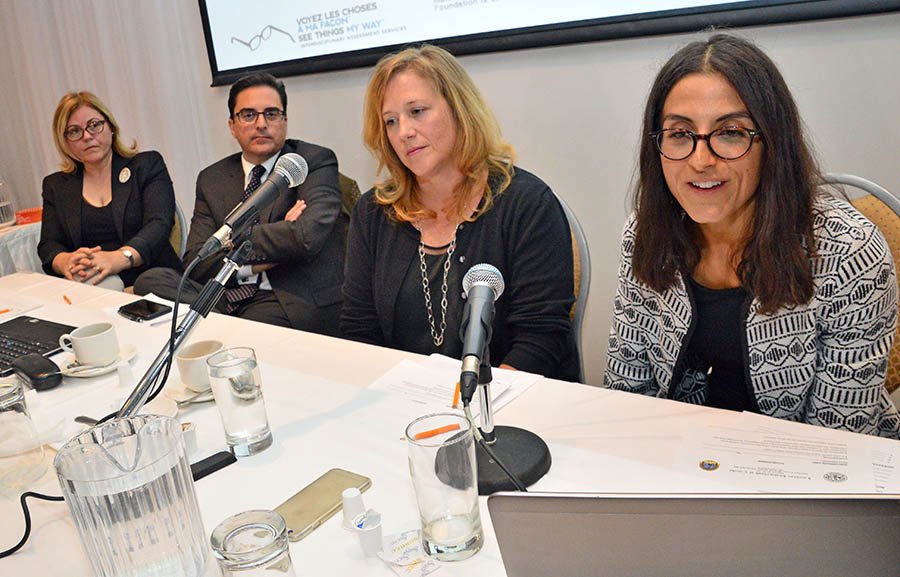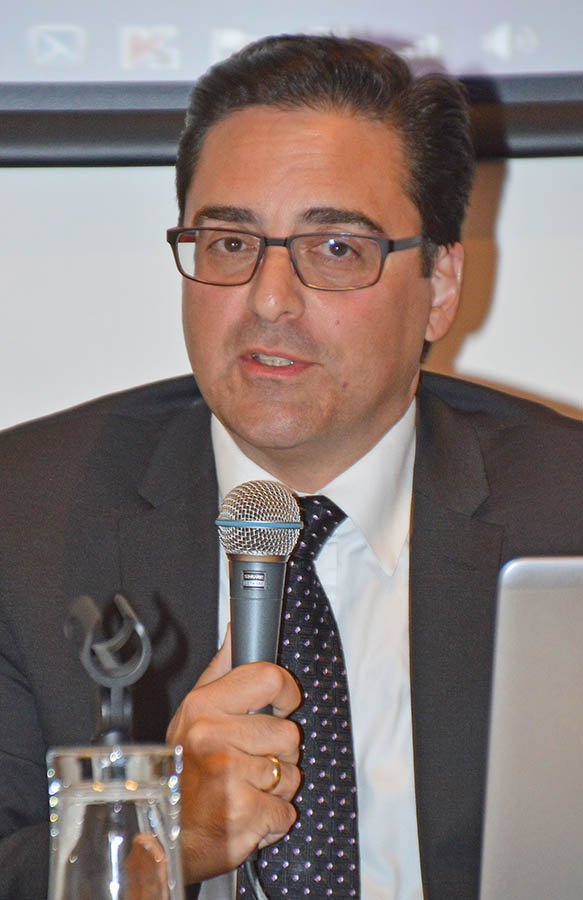Martin C. Barry
With autism diagnoses rising to unprecedented levels, on Sept. 25 one of the Montreal Hellenic community’s largest associations, the Laconian Brotherhood, held an information session and panel discussion on autism spectrum disorders at The Palace convention centre in Laval.
The afternoon’s keynote speaker, Dr. Lila Amirali, is the chief of psychiatry at the Montreal Children’s Hospital and a professor of psychiatry at McGill University.

To inform the community
Three other featured panellists were Hollie-Michelle D’Aoust, a family support coordinator at the See Things My Way Assessment Center, Dr. Nadia Abouzeid, director and lead psychologist at the center, and Nicholas Katalifos, chairman of the Giant Steps School for autistic children who is the parent of a child with autism.
As the Laconian Brotherhood is currently celebrating its 80th year in Montreal, they decided to mark it by coming up with a schedule of events, including this one to better inform people in the community whose lives might be affected by autism, said Pat Kyriacou, president of the Laconian Brotherhood. Other topics that could be focused on at upcoming brotherhood events could be Alzheimer’s disease, she added.
In an interview with Newsfirst Multimedia, Dr. Amirali said the MCH currently has a major project underway called Navigator whose goal is to make sure that every family with an autistic child is assigned a special coordinator to guide them as they seek out services.

An episodic problem
“As children and then as adults, those with autism have what we call episodes in their lives when they need specific services,” she said. “They vary according to the severity of the disorders, according to intellectual abilities, according to the accessibility of private or public resources. It can be quite complex. Today we are trying to shed a little light.”
During her presentation, Dr. Amirali described autism as “something that affects the very fibre of who we are, and it starts at the beginning of life and it continues across a lifespan. But the manifestations change across the lifespan. And they change and they differ because they are subject to development, to changes that are natural with growth.”
According to Dr. Amirali, the characteristics of autism can be identified early on. But, she emphasized, they have to cause significant clinical impairment in order for someone who potentially has autism to be confirmed with that diagnosis. “This is why sometimes it is not very simple to get a diagnosis, and not very simple to give a diagnosis,” she said.
Autism more common now
Based on ne

w developments in diagnosis processes, she said it is now estimated that one to two per cent of the population may have characteristics corresponding to autism spectrum disorders. “The numbers seem to be going up, and they seem to be going up not just because we are better at diagnosis, and not just because we seem to recognize it better,” she said, adding that about one out of every 70 people have autism.
“This is a huge proportion of the population, and you can understand why this is extremely significant for us to be aware. I don’t think there is one single person who has not had or has not come in contact with another individual who has this problem, who has this difficulty or this challenge to deal with.”
Dr. Amirali also touched on the issue of complementary and new therapies for treating autism. While maintaining that she sometimes feels helpless because of the limitations of conventional medicine for treating a problem for which there are treatments but still no cure, she cautioned against concerned parents of autistic children becoming involved with non-medically approved methods for treating autism such as chelation and hyperbaric oxygen therapies.
Unapproved method dangers
“We have children that have died,” she said. “But families can get desperate and I understand this degree of desperation. I mean, they’ll do anything. Sometimes we hear about all sorts of things, like diets, but for all these things there is nothing proven yet today.” Although she was less concerned about a few alternative methods which are unproven but are known to not cause harm, she insisted that parents should always discuss with their physician or paediatrician any kind of treatment.
According to Hollie-Michelle D’Aoust and Dr. Nadia Abouzeid of the See Things My Way Assessment Center which is affiliated with the Miriam Center, there are currently five major hospitals on the island of Montreal where autism evaluations are done. Evaluations can also be referred to See Things My Way, but they don’t accept referrals coming from outside the hospital network.
Two-year wait for diagnosis
“We had a clear mandate when we first opened our doors and it is to help eliminate the wait list across the island of Montreal for the diagnosis of autism,” said D’Aoust, adding that there is currently an estimated two-year wait time for children with autism to get a diagnostic evaluation.
Katalifos spoke about the experience he and his wife had raising a child with autism. “It was kind of a shock to see that he wasn’t developing in exactly the same way as our daughter had,” he said. After obtaining an early diagnosis, they became aware of the problems that face families, such as treatment waiting lists.
While he lamented the shortage of treatment services for autism in English in Quebec, Katalifos praised the CRDI de Laval “because they really went out of their way to find someone that could speak in English” and work with their now 14-year-old son.



